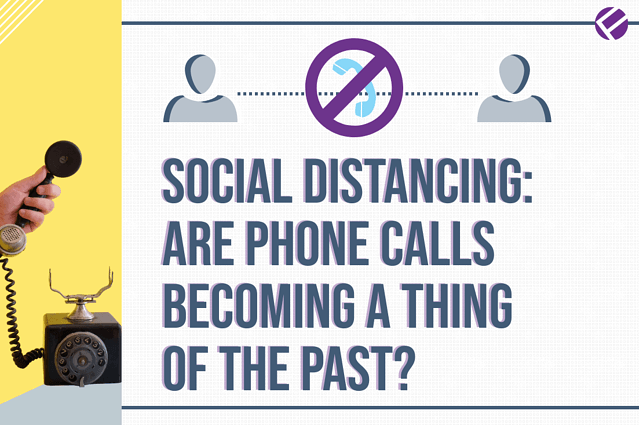Using the Telephone as a Sales Tool: is this Concept Outdated?

Social Distancing has become the ‘new normal’ during the Coronavirus pandemic. Towns, cities, states and countries throughout the world have imposed lock downs to ‘flatten the curve’. As we all navigate this new ‘normal’, it occurred to me that a blog I wrote 8 years ago about using the telephone as a sales tool has become relevant but needed a refresh!
Technology has seen a huge evolution (again!) since I wrote the blog and, while the telephone is not used as much for calling, video conferencing has certainly gained traction and even before the pandemic, it was the go to for meetings rather than a telephone call, or even (when practical) in person meetings.
As the current social distancing protocols do not allow in person meetings, ‘Zoom’ calls have become commonplace and not just in the work environment. An app that we have been using for about two years to transact business meetings has suddenly become the go to for everyone!
In the past 6 plus weeks, Zoom has become the go to for socializing, be it a 10- minute coffee break, a happy hour, a yoga workout, a games night, book club meetings, everyone seems to be getting on board to socialize virtually!
Since we closed the Fisher office so our team can stay safe and work from home, we have encouraged everyone to use their video as much as possible during meetings to ensure we all have some social interaction during the day.
In my experience, conversation flows better when you can see a person, even if the image is transmitted through your computer camera. I also think that knowing you are going to be seen on screen ensures that you get dressed for work even if you are staying home. You may be wearing a collared shirt with shorts but under the desk no one will know!
While all this new technology is great, there are still business challenges when you are trying to drive sales during a pandemic. You can’t just pick up the telephone or schedule a meeting cold! However, you can’t stop working either! When this crisis passes its peak, life should, we all hope, get back to some sort of normal.
Do you want to have a virtual coffee with us?
I think the solution is to use all the tools that we have available to keep connected. Using the telephone is still a great way to build relationships provided you avoid the pitfalls. If you want to make a telephone call, go ahead, but, don’t call without having a compelling message, just checking-in - is not a good reason to call! I would add a caveat that may be different if you have a long-standing relationship with someone.
Other pitfalls include; pestering a prospect, constantly leaving irrelevant messages and when connecting not listening to what the prospect is saying to you!
By using the telephone to be professionally persistent your genuine prospects will be more willing to engage with you. If used in conjunction with email you have a fast and effective backup that you can use to repeat your voicemail message, which will often ensure that you get a response to the message you leave.
A genuine prospect will get back to you. There are two key reasons you don't hear back: 1) if your prospect is not genuine or 2) you are not presenting your product in a way that pique their interest, in both cases your phone and your email will remain quiet!
Don't give up! You can always stop calling for a few weeks and then try and re-engage at a later stage with a different, more compelling message. If that still doesn't work, then you need to find our if they are genuine.
Never be afraid to qualify or disqualify a prospect. Better to work on real opportunities than chase pipe dreams.
The good news, in my opinion, is that the telephone is still a good sales tool; it’s up to you to make sure you are an effective user! When they answer the phone, you can always suggest next time you talk that you make it a Zoom!
Do you want to have a virtual coffee with us?




